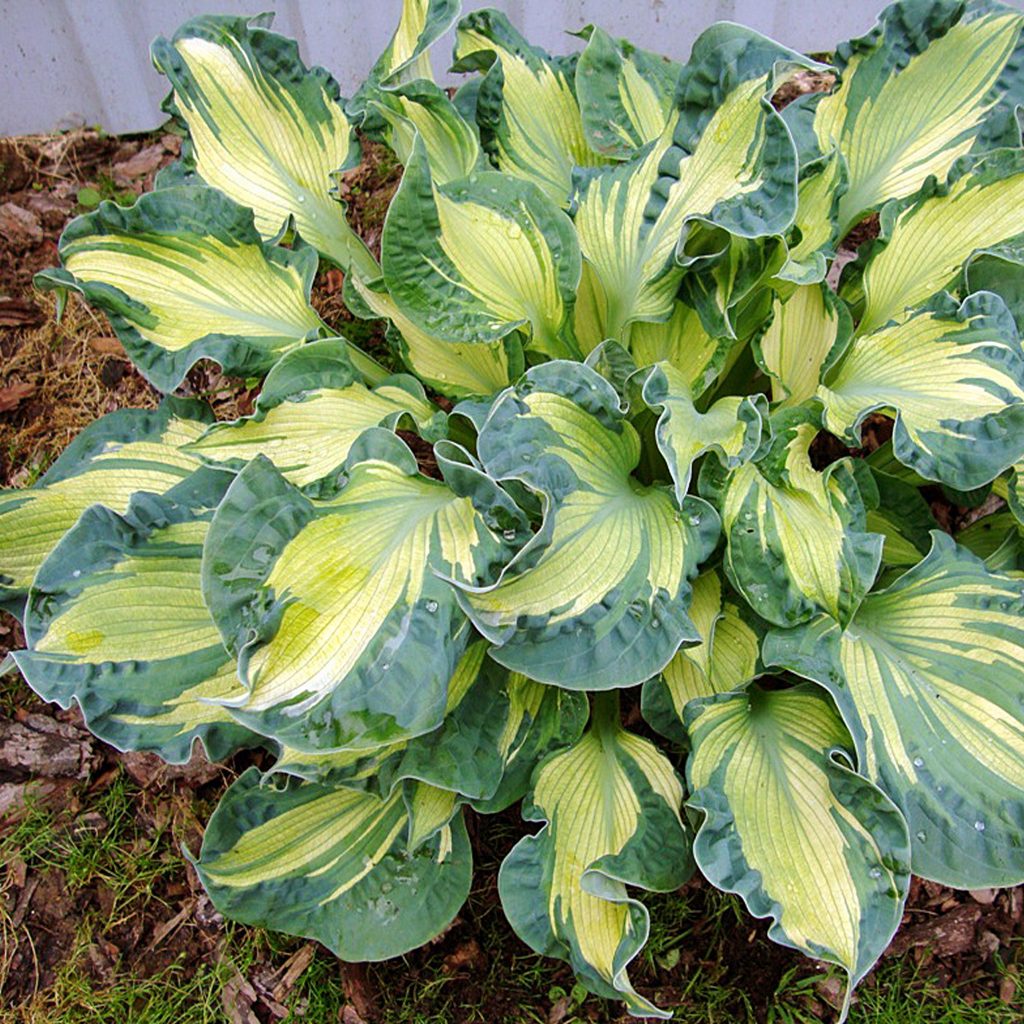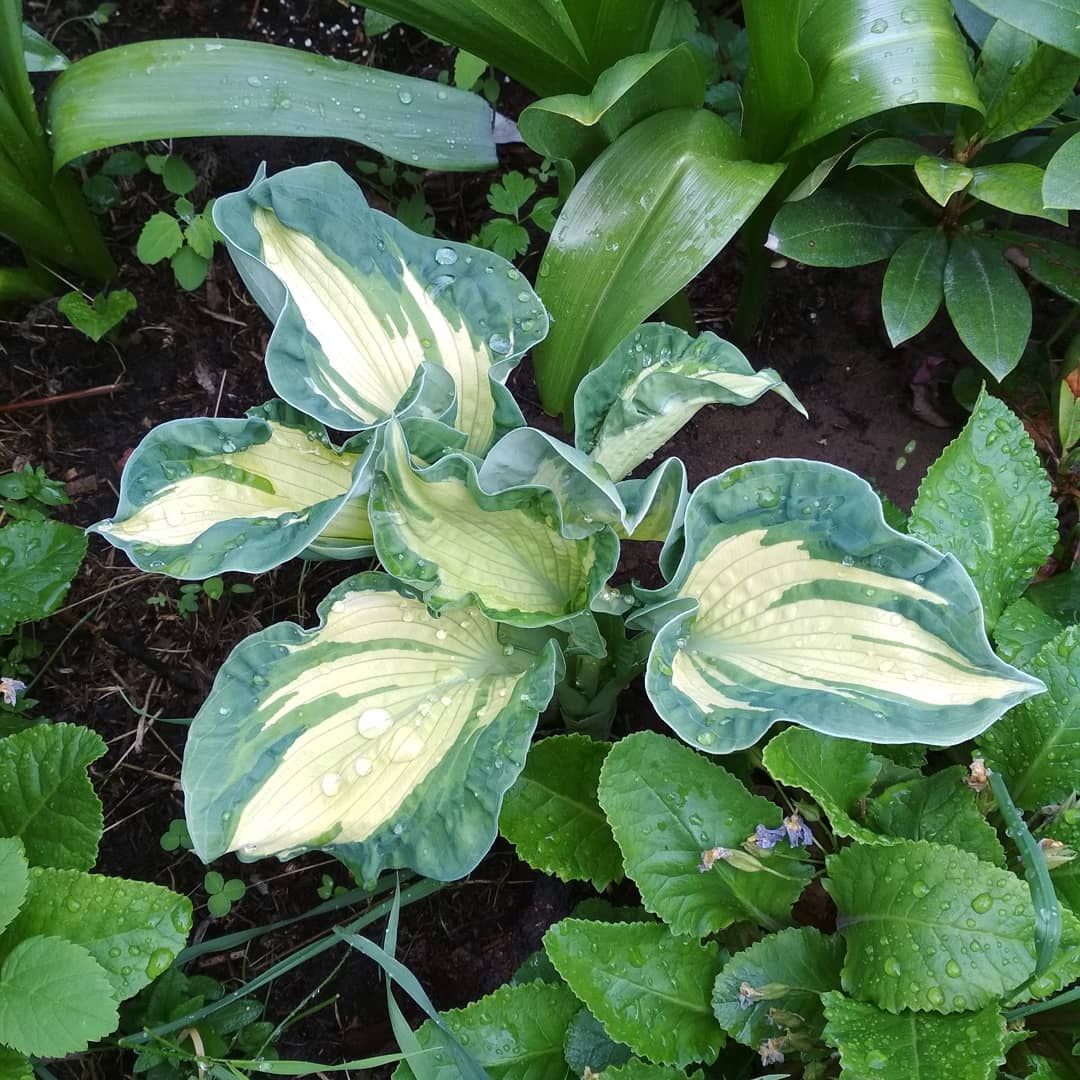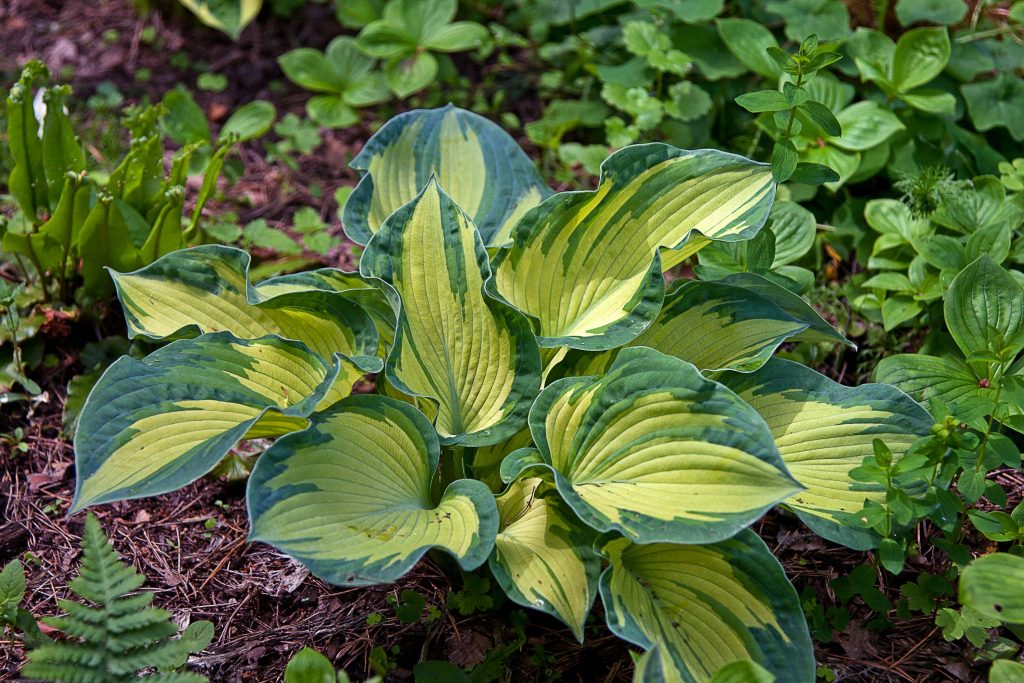Hosta Golden Meadows - the secrets of growing
Hosta Golden Meadows is a beautiful ornamental perennial from the Asparagus family. It is the sport of Siebold's funkii (originator V. Elderen). The name of the variety translates as “golden meadow”, emphasizing the original color and unusual shape of the leaves.

Hosta Golden Meadows Photos
Description of the variety
Golden Meadows are medium to large sized hosts. It reaches a height of 50-60 cm, and sometimes 70 cm. It grows in width - up to 60-80 cm. The bush is lush, but compact, hemispherical in shape. This hosta has oval leaves (24x15 cm) with a sharp tip and wavy edges.
The central part of the leaf plate turns golden, which soon becomes creamy, and then darkens to a chartreuse shade. The border always remains dark green with a blue tint and stands out from the center.
Flowers appear in the middle of summer - almost white bells on tall peduncles.
Landing features
Golden Meadows with an open root system are best planted in the spring, and the specimens in a container are ready for planting at any time during the summer.
This variety is suitable for a half shaded place. In full shade, the leaves can lose their golden and blue hues, and in the sun they burn out and even get burns.
Suitable for funky soil - neutral or slightly acidic, preferably fertile. More organic matter should be added to sandy soils, and coarse sand should be added to dense and heavy soils.
Do not plant the host in places where groundwater is close. If moisture accumulates on the site, you can build an embankment for the seedling and lay a thick layer of drainage.
The distance between plants, when planting in groups, should be 50-70 cm.
Technology:
- The planting hole is dug deeper and wider than the earthen coma (50-70 cm in length and depth).
- Drainage from small stones or brick chips is placed at the bottom.
- Garden soil is mixed with peat, compost, rotted manure - the hole is filled by a third.
- If a host with an open root system is planted, the soil mixture is poured with a slide, a seedling is installed, and the roots are carefully lowered along the slopes; planting of a container plant is carried out by the transshipment method.
- Funkia is poured with two buckets of lukewarm water, covered with a nutritious substrate and tamped.
- From above, the soil is mulched with dry organic matter.
Care
Golden Meadows is an unpretentious function that is not afraid of droughts and cold. However, it does not tolerate waterlogging, although it needs moderate soil moisture. For better decorativeness, the host needs to be fed, and cut off in the middle of autumn.

Hosta Golden Meadows
Watering
Water the hosta 2-3 times a week, focusing on the condition of the soil. The soil should be moderately moist, but not turn into a stagnant "swamp". Watering is best done in the morning (before 11 o'clock), directing the stream to the root, and not to the leaves. Usually 1-3 buckets of water are used for one bush.
Top dressing
Organics laid down during planting will provide the function with nutrients for the entire season. In autumn, it must be mulched with peat or compost, and in early spring, repeat the procedure. In addition to organic fertilizers, you can use mineral complexes - in April and before flowering.
Pruning and preparing for winter
Faded flower stalks are cut to maintain the decorative shape of the funkia. With the onset of autumn cold weather and yellowing of the leaves, the entire ground part of the bush is cut off. This creates a good prevention of pests and diseases.
The plant is frost-resistant, but for the winter it is better to cover it with dry fallen leaves.
Reproduction
The host is propagated by cuttings and dividing the bush. Since Golden Meadows is a hybrid variety, the seeds do not retain varietal characteristics. It is better to divide the bush for the 4-6th year after planting, so that it has time to grow.
The plant is dug up and divided into several parts with an equal number of buds and roots. Each cut is planted separately in moist soil in partial shade.
Cuttings are cut "with the heel" and sprinkled with a rooting stimulant. In a shady place, loosen and moisten the soil (you can mix the top layer with peat), deepen the cuttings and cover with plastic bottles. Roots appear within a month. During the rooting period, the seedlings are regularly watered and ventilated "mini-greenhouses".
Diseases and pests
Thanks to its particularly dense leaves, Golden Meadows is much less likely to be damaged by slugs, caterpillars and snails than other varieties. For prevention, sprinkle the soil around with soda, tobacco or prickly pebbles.

Hosta Golden Meadows Photo Description
In rare cases, the function is exposed to the invasion of aphids - brown dots appear on the leaves, similar to punctures. To get rid of insects, it is advised to wash the bush with a solution of laundry or tar soap.
Due to waterlogging or stagnant water, the host can suffer from fungi that provoke rot. Signs of damage: stunting, yellowing and wilting of leaves, softening and darkening of the stems. The damaged parts of the funkii must be cut off, and the remaining parts must be treated with a fungicide. Then the plant is transplanted to a new location.
Application in landscape design
Original Golden Meadows leaves can decorate a garden of any style, make a bright accent and highlight the beauty of neighboring plants. Dense bushes can serve as living borders, flower bed frames, cute tapeworms or mixborder participants. Often, funkia is grown in a pot, using it to decorate gazebos, terraces and facades.
Hosta looks great with rocks and ponds, in rock gardens and flower beds. It blends harmoniously with conifers, ferns, roses and lilies. To complement the composition with vertical lines, delphinium, phlox or gladioli are often planted next to the funkia.
Testimonials
According to the description of gardeners, Golden Meadows grows quite quickly, waking up in the spring before many other plants. The shades of the original leaves change several times per season, giving the host a new charm all the time. The bush responds gratefully to feeding and does not adequately tolerate weather changes.

Hosta Siebold Golden Meadows
The function is successfully rooted by cuttings and takes root well when propagated by cuttings. She staunchly withstands winter frosts, rarely gets sick and is almost not affected by pests. Most gardeners appreciate this variety for its excellent decorative effect, high resistance and almost trouble-free growing.

